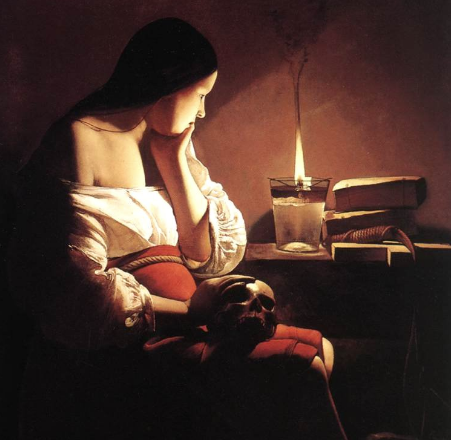Pretty much anyone who has seen a Caravaggio can make a reasonable guess at what Tenebrism is, because anyone who has seen one of his paintings knows they are all about the gloomy, stark, dramatic light. (Sometimes informally called God-light, due to the religious content of many of Caravaggio’s paintings.)
Tenebrism, from Italian tenebroso (“dark, gloomy, mysterious”), also termed dramatic illumination, is a style of painting using profoundly pronounced chiaroscuro, with violent contrasts of light and dark, and where darkness is a dominating feature of the image.
The term Caravaggism is a technique of Tenebrism and chiaroscuro developed by the Italian Mannerist painter Michelangelo Merisi da Caravaggio (1571-1610), and used by him in his religious art, genre paintings and still life works, and was subsequently widely adopted by other contemporary artists in Italy and across Europe.
Caravaggio’s signature style was a defining element in the new era of 17th century Baroque art, as seen in the work of Diego Velazquez and Rembrandt van Rijn.
Tenebrism is referenced in Chapter 16 of Dressing Stone, during the LSD and Ecstasy fueled riot that occurs at Wall Drug, a widely popular tourist trap in Wall, SD.


I love the art historical research and connections. What does the “Dressing Stone “ refer to? As in finer points?
Check out the blog Post A Note on the Title